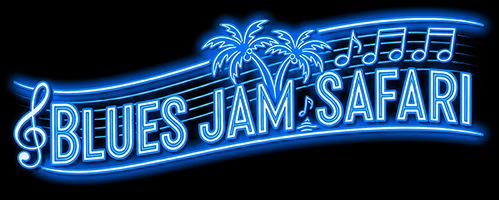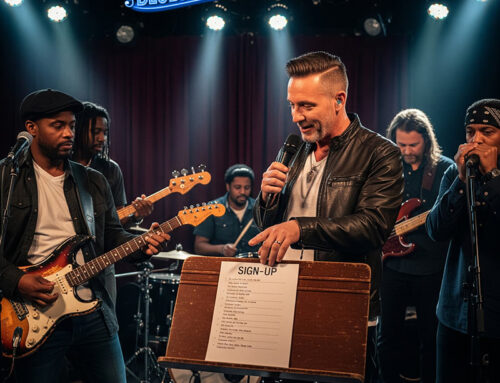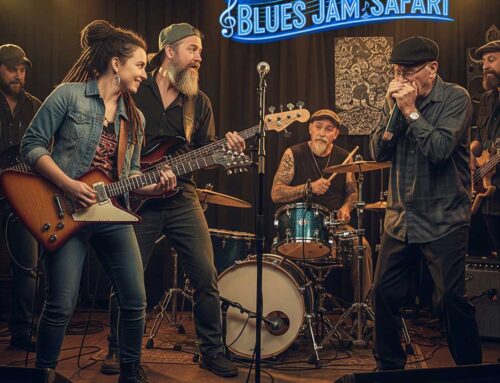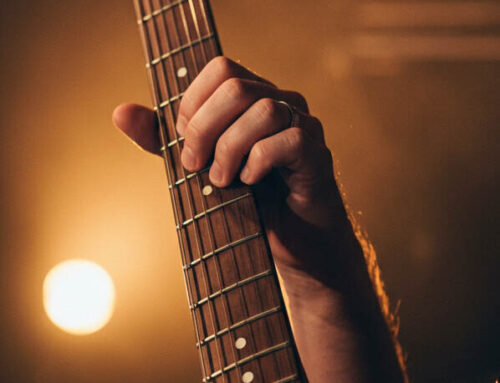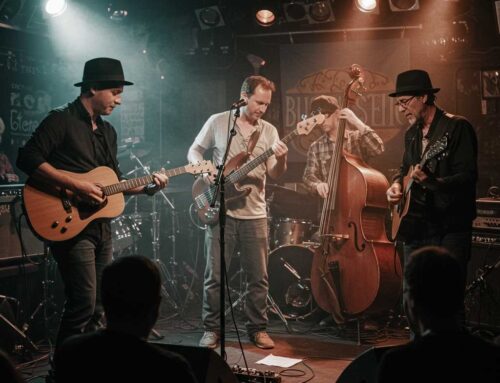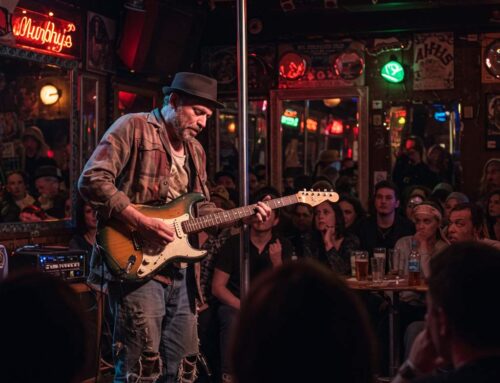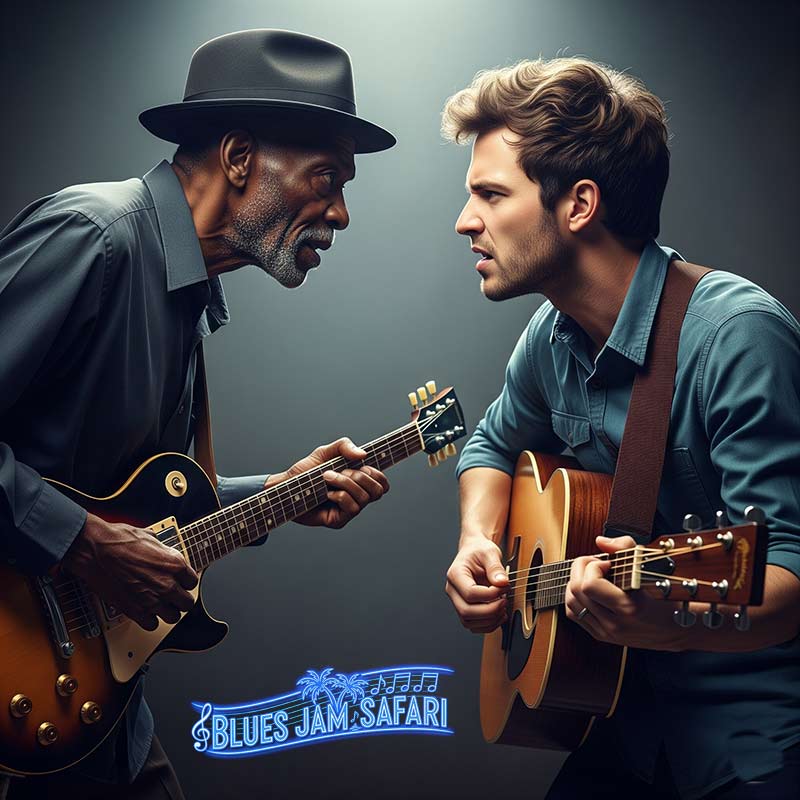
Blues Jam vs. Open Mic: A Profound Divide in Musical Culture
By: Richard Harvey
While both offer a stage to aspiring and seasoned musicians alike, the worlds of a blues jam and a general open mic are separated by more than just genre. They represent profoundly different philosophies of music-making, community, and the very nature of performance. Understanding this distinction illuminates why the experience at each event can be so unique, and the distinct challenges that can arise.
The Core Philosophy: Collaboration vs. Exhibition
At their heart, the most significant difference lies in their underlying intent:
- The Open Mic: The Solo Showcase: An open mic is fundamentally an act of exhibition. It’s a platform for individual artists—be they singer-songwriters, comedians, poets, or full bands—to present their prepared material. The emphasis is on the individual’s performance, their craft, their song. The audience is there to witness a series of distinct, often unrelated, acts. The beauty of an open mic is its democratic nature; anyone can step up, from a nervous beginner to a polished professional trying out new material. It’s about personal expression, a chance to be heard, and often, a stepping stone.
- The Blues Jam: The Collective Conversation: A blues jam, conversely, is an act of collective improvisation and shared heritage. It’s less about presenting a finished piece and more about engaging in a spontaneous, ongoing musical conversation. Musicians are expected to understand the unspoken language of the blues—its progressions, its grooves, its historical vocabulary. The “song” is often called out as a key and a feel (“12-bar slow shuffle in A”), and then everyone contributes, listening, reacting, and building together. It’s about deep musical connection, a form of communal storytelling, and a way to keep a vital American art form alive through living interaction.
The Ecosystem: Structure, Community, and Expectation
These differing philosophies create distinct ecosystems:
- Open Mic:
- Structure: Often loose, with a host managing a sign-up sheet and time slots. Performers bring their own gear (or use minimal house equipment).
- Community: Can be transient; performers might come and go, rarely playing with the same people twice. Networking happens, but deep musical bonds are less of a given.
- Expectation: The audience expects variety. They’re prepared for anything from profound brilliance to hesitant beginner fumbles. The “rules” are often about time limits and basic respect.
- Blues Jam:
- Structure: More inherent structure within the improvisation. There’s often a consistent “house band” (or at least a core rhythm section) that anchors the jam. Musicians rotate in, and the host (often the bandleader) facilitates these spontaneous ensembles.
- Community: Tends to be tighter-knit. Regulars know each other, understand each other’s styles, and often develop a genuine camaraderie. It’s a place for mentorship, learning by doing, and fostering deep musical relationships.
- Expectation: A shared understanding of the blues genre is assumed. While supportive of all levels, there’s an expectation that participants can at least follow the fundamental changes and listen. It’s a living tradition being passed down, note by note. Sometimes, when inexperienced players are thrown together by a less-than-attentive host, the result can be a chaotic and challenging collective effort, where the simple blues standard struggles to find its rhythm and harmony. This is part of the raw, unscripted reality of spontaneous musical gatherings.
Navigating the Unpredictable: Musical Challenges
Every live performance has its moments of unpredictability, and these can manifest differently depending on the setting:
- Blues Jam Challenges: The primary challenge here lies in the spontaneous collaboration. Musicians must quickly adapt to strangers, follow subtle cues, and contribute constructively without overpowering others. When the collective understanding breaks down, perhaps due to inexperience from multiple new players, the sound can become disjointed and aimless. The musical lines may clash, rhythms may wander, and the harmony can feel uncertain. It’s an awkward scramble for cohesion.
- Open Mic Challenges: Here, the challenge is often amplified by the diversity of genres and the potential for sheer volume. A performer attempting a complex genre like heavy metal without the necessary skill can create a jarring auditory experience. The genre’s reliance on loud amplification, aggressive distortion, and intricate, fast-paced sections means that mistakes are not merely noticeable, but are amplified into sharp, often grating, noise. A lack of precision in these high-energy styles can result in a harsh, disorienting sound that’s far more impactful and less forgiving on the ears than a blues jam’s struggle for harmony.
In essence, a blues jam, even when struggling for cohesion, typically operates within a relatively “gentle” sonic spectrum, a conversation trying to find its way. A high-energy performance gone awry at a general open mic, however, can be a full-force collision of amplified sound, leaving a much more intense and lasting impression.
